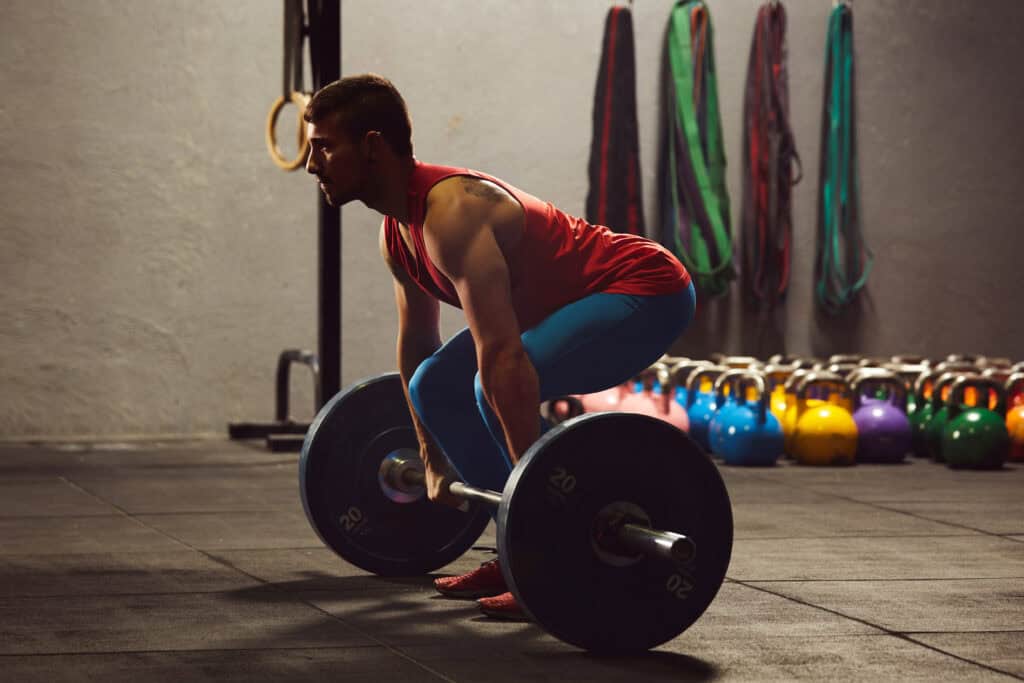If you could only do one strength training exercise in your workout, which exercise would you choose? According to science, the deadlift is widely regarded as the best choice according to scientific literature. Here’s why:
The Science Behind the Deadlift
- Muscle Activation: The deadlift is a compound movement that engages multiple muscle groups simultaneously, including the glutes, hamstrings, quadriceps, lower back, upper back, and core. Studies have shown that the deadlift activates more muscles than many other exercises, making it highly efficient in terms of overall muscle development .
- Strength and Power: Research indicates that the deadlift is one of the most effective exercises for developing maximal strength and power. It is commonly used in strength training programs to enhance performance in various sports and physical activities .
- Functional Fitness: The deadlift mimics real-life movements, such as lifting heavy objects from the ground. This functional aspect helps improve daily life activities and reduces the risk of injury .
- Hormonal Response: Performing deadlifts can lead to significant increases in anabolic hormones such as testosterone and growth hormone, which are crucial for muscle growth and recovery .
- Bone Density: Weight-bearing exercises like the deadlift are beneficial for increasing bone mineral density, which is essential for preventing osteoporosis and maintaining skeletal health .
Conclusion
The deadlift stands out as the best single strength training exercise due to its comprehensive muscle engagement, functional benefits, and positive impact on overall strength and health. Incorporating deadlifts into your workout routine can provide a solid foundation for building strength and improving physical fitness.
References:
- Hales, M. E., Johnson, B. F., & Johnson, J. T. (2009). “Kinematic analysis of the powerlifting style squat and the conventional deadlift during competition: Is there a cross-over effect between lifts?” Journal of Strength and Conditioning Research, 23(9), 2574-2580.
- Escamilla, R. F., Francisco, A. C., Kayes, A. V., Speer, K. P., & Moorman, C. T. (2002). “An electromyographic analysis of sumo and conventional style deadlifts.” Medicine and Science in Sports and Exercise, 34(4), 682-688.
- Swinton, P. A., Stewart, A. D., Lloyd, R., Agouris, I., & Keogh, J. W. (2011). “Effect of load positioning on the kinematics and kinetics of weighted vertical jumps.” Journal of Strength and Conditioning Research, 25(9), 2440-2448.
- Schoenfeld, B. J. (2010). “The mechanisms of muscle hypertrophy and their application to resistance training.” Journal of Strength and Conditioning Research, 24(10), 2857-2872.
- Hakkinen, K., Pakarinen, A., Alen, M., Kauhanen, H., & Komi, P. V. (1988). “Neuromuscular and hormonal responses in elite athletes to two successive strength training sessions in one day.” European Journal of Applied Physiology and Occupational Physiology, 57(2), 133-139.
- Layne, J. E., & Nelson, M. E. (1999). “The effects of progressive resistance training on bone density: a review.” Medicine and Science in Sports and Exercise, 31(1), 25-30.
Is Rowing Considered a Good Option for Cardio?
A rowing workout is one of the most comprehensive forms of exercise, engaging multiple muscle groups simultaneously. Here are the primary muscle groups activated during a rowing workout.
How Many Muscle Groups Does a Rowing Workout Use?
Legs:
- Quadriceps
- Hamstrings
- Calves
- Glutes
Core:
- Abdominals
- Obliques
- Lower back muscles
Upper Body:
- Biceps
- Triceps
- Shoulders (deltoids)
- Upper back (trapezius and rhomboids)
- Forearms
Back:
- Latissimus dorsi
- Erector spinae
Is Rowing the Best Cardio Exercise?
Based on the comprehensive engagement of muscle groups and the multitude of benefits it offers, rowing can be considered one of the best cardio exercises, performed in a gym. Here’s why:
- Full-Body Workout: Unlike many other cardio exercises that primarily target lower body muscles, rowing provides a full-body workout. This balanced engagement of both upper and lower body muscles makes it highly effective for overall muscle development and strength.
- Cardiovascular Benefits: Rowing significantly increases heart rate and improves cardiovascular health. It enhances aerobic capacity and endurance, making it a highly efficient cardio exercise.
- Calorie Burn: Due to the involvement of multiple muscle groups, rowing burns a substantial amount of calories. This makes it an excellent choice for weight loss and maintaining a healthy body composition.
- Low Impact: Rowing is a low-impact exercise, meaning it is gentle on the joints compared to high-impact activities like running. This makes it suitable for people with joint issues or those recovering from injury.
- Improved Posture and Core Strength: Rowing requires proper form and posture, which helps strengthen the core and improve overall body alignment. This can be beneficial for reducing back pain and enhancing functional fitness.
- Mental Health Benefits: Like other forms of aerobic exercise, rowing releases endorphins, which can help reduce stress, anxiety, and depression. It also promotes better sleep and overall mental well-being.
Conclusion
Rowing is an exceptional cardio exercise that engages numerous muscle groups, provides extensive cardiovascular benefits, burns calories efficiently, and is gentle on the joints. Its comprehensive nature and wide-ranging benefits make it one of the best choices for a full-body workout.
References:
- Steinacker, J. M. (1993). “Physiology of rowing.” International Journal of Sports Medicine, 14(Suppl 1), S3-S10.
- Hagerman, F. C. (1984). “Applied physiology of rowing.” Sports Medicine, 1(4), 303-326.
- Gee, T. I., Olsen, P. D., Berger, N. J., Golby, J., & Thompson, K. G. (2011). “Strength and conditioning practices in rowing.” Journal of Strength and Conditioning Research, 25(3), 668-682.
- Secher, N. H. (1993). “The physiology of rowing.” Journal of Sports Sciences, 11(1), 23-53.
- Wainwright, N. W., et al. (2014). “Associations of screen time, physical activity, and fitness with mental health and well-being in adolescents: review of the DEDIPAC reviews.” European Journal of Public Health, 24(Suppl 2), 44-53.
Stay Strong Together
- The New Rules of Strength Training in 2026 - December 24, 2025
- Fibermaxxing: Viral Nutrition Trend You Should Know - December 17, 2025
- Hybrid Metabolic Strength Training for Faster Results - December 10, 2025
